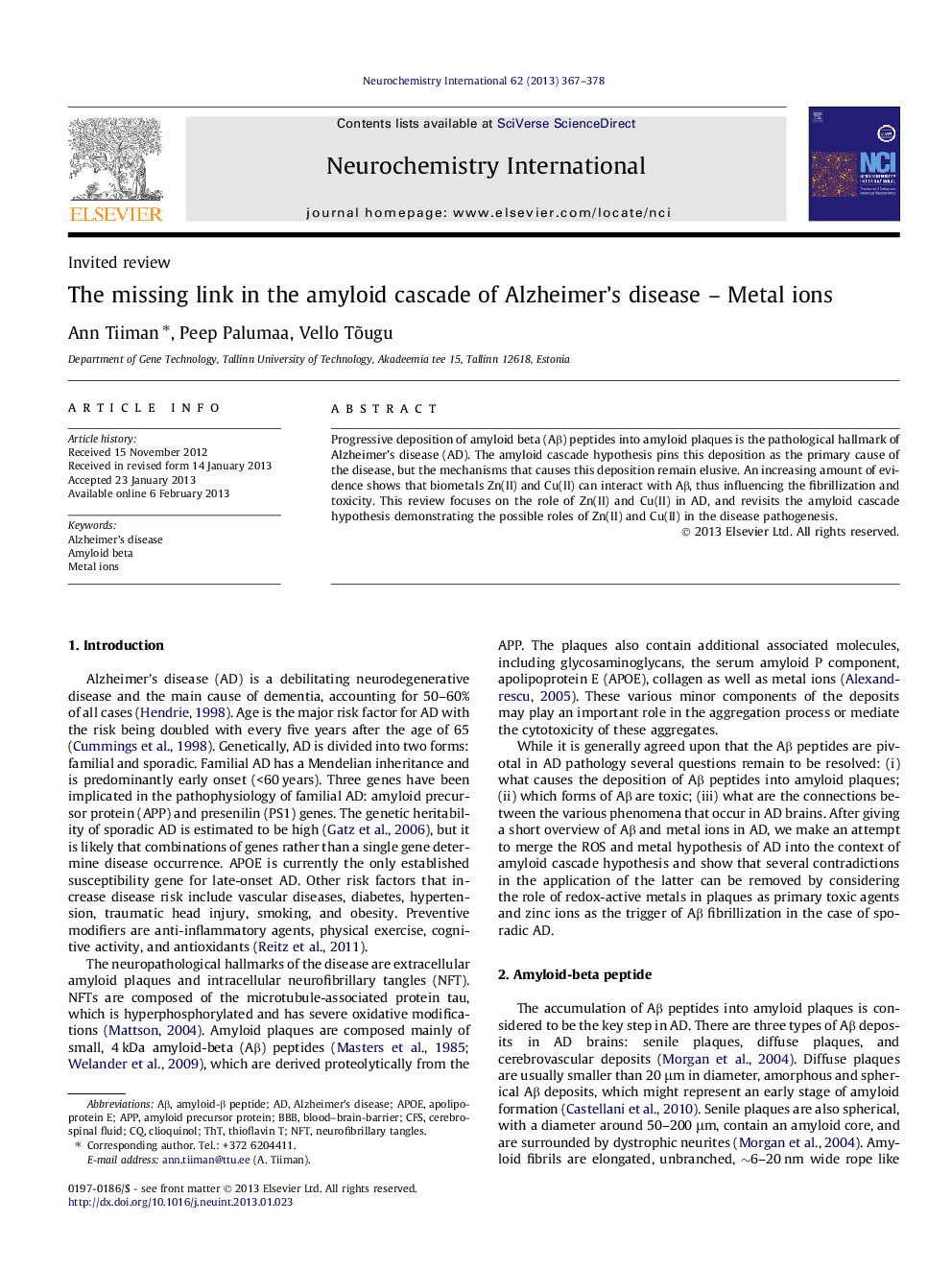| Article ID | Journal | Published Year | Pages | File Type |
|---|---|---|---|---|
| 2200674 | Neurochemistry International | 2013 | 12 Pages |
Progressive deposition of amyloid beta (Aβ) peptides into amyloid plaques is the pathological hallmark of Alzheimer’s disease (AD). The amyloid cascade hypothesis pins this deposition as the primary cause of the disease, but the mechanisms that causes this deposition remain elusive. An increasing amount of evidence shows that biometals Zn(II) and Cu(II) can interact with Aβ, thus influencing the fibrillization and toxicity. This review focuses on the role of Zn(II) and Cu(II) in AD, and revisits the amyloid cascade hypothesis demonstrating the possible roles of Zn(II) and Cu(II) in the disease pathogenesis.
Graphical abstractFigure optionsDownload full-size imageDownload as PowerPoint slideHighlights► Binding of Zn(II) and Cu(II) to Aβ has a complex effect on Aβ fibrillization. ► Amyloid cascade in AD may be triggered by metal (zinc and/or copper) ions. ► The toxicity of amyloid fibrils is caused by the content of redox-active metal ions.
